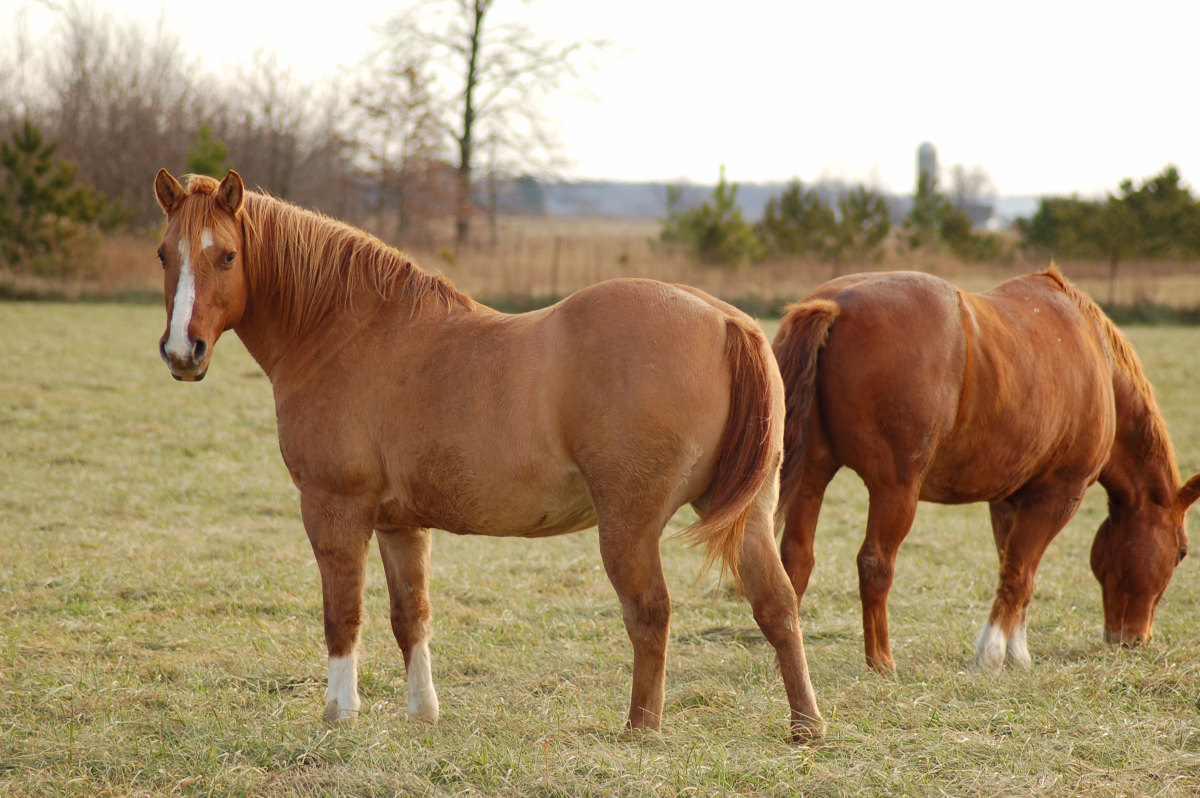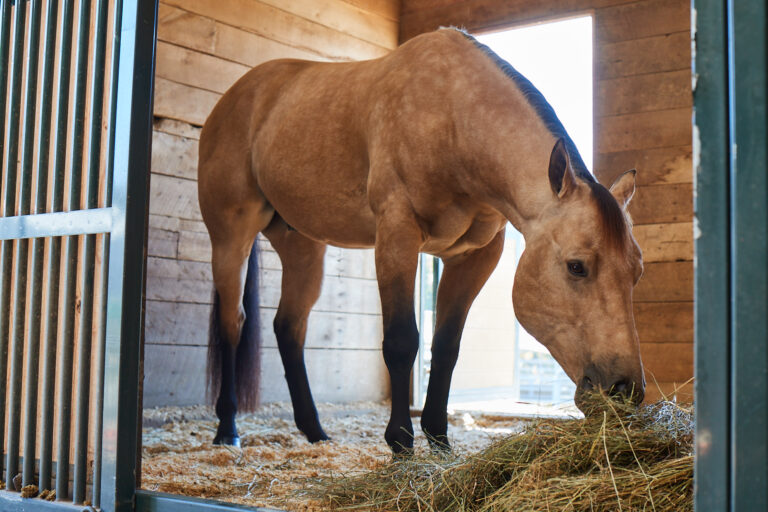
It is common knowledge that exercise does wonders for a variety of physical ailments as both prevention and treatment. But sometimes it’s nice to have that assumption corroborated with a research study [Bamford, N.J.; Potter, S.J.; et al. Influence of dietary restriction and low-intensity exercise on weight loss and insulin sensitivity in obese equids. Journal of Veterinary Internal Medicine Nov 2018].
Over the course of 12 weeks, an Australian study examined 24 obese horses (aged 6-12 years old) with body condition scores (BCS) of more than 7 (out of 9). All of the horses had been sedentary for the previous year. The horses were managed with either diet restriction only or the same diet restriction combined with low-intensity exercise on an automated horse walker for five days a week. The exercised horses were asked to walk for five minutes, do a brisk trot for 15 minutes, followed by five more minutes of walking. The horses were all fed four feedings a day of forage with 9.1% non-structural carbohydrate (NSC) at an amount of 1.25% of body weight. (NSC is measured as a combination of starch and water-soluble carbohydrate. Ideally, a horse should receive <10-12% NSC on a dry-matter basis in its diet.)
Total body fat mass was determined at the beginning of the study and compared to the end result. Assays measured insulin sensitivity based on an IV glucose tolerance test before and at the end of the study as well as adiponectin and serum amyloid A (SAA) as a systemic inflammatory biomarker. (Adiponectin secreted by fat cells is “insulin sensitizing and anti-inflammatory.”)
Both groups experienced similar decreases in BCS, crest neck score, body weight and fat mass. Both groups demonstrated lowered insulin and leptin concentrations and increased adiponectin concentrations. The horses that were managed with both diet restrictions and low-level exercise also had improved insulin sensitivity and reduced serum amyloid A (SAA) concentrations compared to the horses that only received dietary restriction.
Calorie restriction is critical to achieving weight loss, especially when non-structural carbohydrate intake is minimized to limit hyperinsulinemia. For some horses, dietary restriction alone without exercise does not manage insulin dysfunction. Previous studies have also demonstrated that low-intensity exercise without dietary modifications does not always improve insulin sensitivity. Coupling exercise with calorie restriction does improve insulin sensitivity.
The authors concluded that, “Regular, low-intensity exercise provides additional health benefits when combined with dietary restriction as part of a weight loss program for obese equids.”









